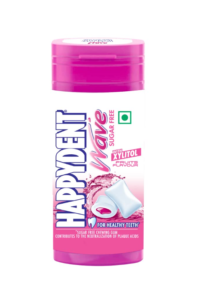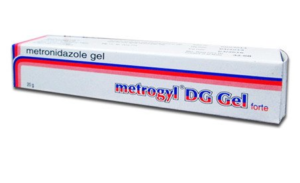What are Dental Fillings?
Dental fillings are a key part of restorative dentistry. They are used by dentists to repair cavities and fix minor chips and cracks in teeth. Known also as tooth fillings, cavity fillings, or dental restorations, these treatments help restore the functionality and integrity of damaged teeth.

Types of Dental Fillings: A
Comprehensive Guide
Direct Fillings: Quick and Effective
Direct fillings are created and placed by your dentist in a single visit, without
the need for a dental laboratory. Common materials for direct fillings include:
- Amalgam: Silver in color, containing mercury mixed with silver, tin, zinc,
and copper. Known for its durability and strength. - Composite Resin: Tooth-colored, consisting of a resin base with powdered
quartz, silica, or glass. Ideal for a natural look. - Glass Ionomer: Tooth-colored and made of silica glass powder. Releases
fluoride, which can help prevent further decay.
Indirect Fillings: Precision and Durability
Indirect fillings are made in a dental laboratory and typically require two
visits. Common types of indirect fillings include inlays and onlays, which are
used when a tooth has too much damage for a regular filling but not enough
to need a crown. Materials for indirect fillings include:
- Gold: Highly durable and long-lasting, but also more expensive. Contains
gold mixed with other metals like silver, tin, copper, or palladium. - Porcelain: Tooth-colored and aesthetically pleasing, made from a mixture
of minerals like feldspar, quartz, and kaolin.
Advantages and Disadvantages of
Different Filling Materials:
Gold Fillings:
- Advantages: Extremely durable, lasting over 15 years; doesn’t corrode;
aesthetically pleasing to some. - Disadvantages: Expensive; requires multiple visits; potential for galvanic
shock if placed next to a silver filling.
Silver Fillings (Amalgam):
- Advantages: Durable, lasting 10-15 years; strong; less expensive.
- Disadvantages: Poor aesthetics; potential for tooth discoloration and
cracks; allergic reactions in some individuals.
Tooth-Colored Composites:
- Advantages: Matches tooth color; bonds well to tooth structure; versatile
for various repairs. - Disadvantages: Less durable than amalgam; may chip or wear over time;
can stain; longer application process.
Glass Ionomer:
- Advantages: Tooth-colored; releases fluoride; good for fillings below the
gum line. - Disadvantages: Weaker than composites; more susceptible to wear and
fractures; typically lasts less than 5 years.
Ceramics (Porcelain):
- Advantages: Stain-resistant; aesthetically pleasing; durable.
- Disadvantages: Expensive; requires multiple visits.
What Happens When You Get a Filling?
When your dentist decides that a cavity needs filling, they begin by
meticulously removing decayed or damaged tissue from your tooth using
specialized instruments. This process ensures that the affected area is
thoroughly cleaned out to prevent further decay. Once cleaned, the dentist
fills the cavity with a suitable dental filling material chosen from a variety of
options such as amalgam, resin composite, or glass ionomer. For resin
composite fillings, a dental curing light is used to harden the material, after
which the dentist polishes and smoothens any rough edges. Finally, they
check your bite to ensure it feels normal and comfortable.
What Happens During a Dental Filling
Procedure?
The exact steps of a dental filling procedure can vary based on the type
of filling material used and the specific needs of the patient. Generally, the
dentist starts by numbing the tooth and surrounding gum tissue with local
anesthesia to ensure a pain-free experience. They then proceed to remove
the damaged or decayed tissue, carefully filling the resulting hole with the
chosen dental material. For resin composite fillings, the material is hardened
using a dental curing light before the dentist finishes by polishing the filling
to blend seamlessly with your natural tooth structure. If you experience
dental anxiety, ask about sedation options to help you stay calm and
comfortable throughout the procedure.
How Do I Know if I Need a Filling?
Detecting the need for a filling requires a thorough dental examination by
your dentist. During a routine checkup, your dentist uses a small mirror to
inspect the surfaces of each tooth for any signs of decay or abnormalities.
Using special instruments, they closely examine areas that appear suspicious.
X-rays may also be taken to reveal cavities that aren’t visible to the naked
eye. Based on the extent of damage caused by decay, your dentist will
recommend the appropriate treatment to restore your tooth’s health and
function.
Notifications
- Diwali Celebrations at Dentistium – Where Smiles Shine Brighter!✨ Diwali Celebrations at Dentistium – Where Smiles Shine Brighter! …
Read More "Diwali Celebrations at Dentistium – Where Smiles Shine Brighter!"
- Diwali Festival Week Clinic Timings – Vastrapur & Shela Branch🪔 Diwali Festival Week Clinic Timings – Vastrapur & Shela …
Read More "Diwali Festival Week Clinic Timings – Vastrapur & Shela Branch"
- Dental Awareness & Check-up Camp at North View Heights, Shela – 5th October 2025Dental Awareness North View Heights (Shela) – 05th October 2025 …
Read More "Dental Awareness & Check-up Camp at North View Heights, Shela – 5th October 2025"
Recent Posts
- Diwali Celebrations at Dentistium – Where Smiles Shine Brighter!
 ✨ Diwali Celebrations at Dentistium – Where Smiles Shine Brighter! …
✨ Diwali Celebrations at Dentistium – Where Smiles Shine Brighter! …Read More "Diwali Celebrations at Dentistium – Where Smiles Shine Brighter!"
- Dental Implants: Procedure, Purpose & Benefits
 Dental Implants: Procedure, Purpose & Benefits When it comes to …
Dental Implants: Procedure, Purpose & Benefits When it comes to … - The Many Factors Influencing Patient Hygiene Practices
 The Many Factors Influencing Patient Hygiene Practices Maintaining proper hygiene …
The Many Factors Influencing Patient Hygiene Practices Maintaining proper hygiene …Read More "The Many Factors Influencing Patient Hygiene Practices"
- October 2025 (3)
- September 2025 (8)
- August 2025 (7)
- July 2025 (6)
- June 2025 (5)
- May 2025 (53)
- April 2025 (2)
- March 2025 (3)
- January 2025 (2)
- November 2024 (1)
- April 2024 (1)
45,876 hits
.
Most Searched Pharmacy products on our site
-
₹42.37Rated 0 out of 5
-
-
-
.
.










